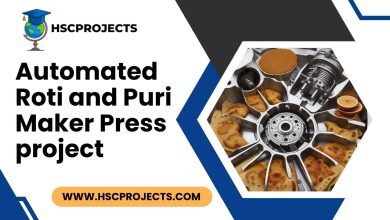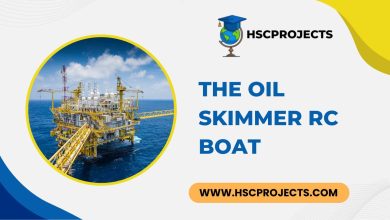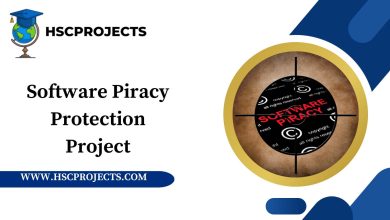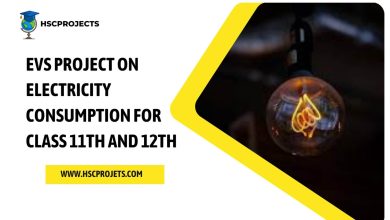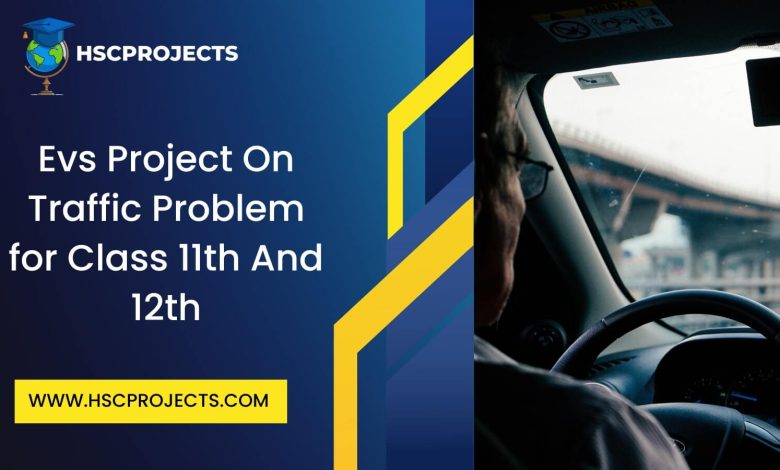
EVS Project On Traffic Problem For Class 11th And 12th
Acknowledgment
I’d like to extend my sincere gratitude to all those who played a crucial role in bringing this project on “Traffic Problems” to fruition. This undertaking would not have been possible without the unwavering support, invaluable guidance, and encouragement of numerous individuals and organizations.
First and foremost, I want to express my heartfelt thanks to my EVS teacher, [Teacher’s Name], whose insights, constructive feedback, and steadfast support have been instrumental in shaping the content and direction of this project. Your guidance has been nothing short of transformative.
I am also deeply thankful to my parents and family members for their enduring encouragement, patience, and understanding during the rigorous research and writing process. Your unwavering belief in my abilities has been the driving force behind the successful completion of this project.
My gratitude extends to my classmates and friends who not only offered valuable suggestions but also enriched the depth of this project with their diverse perspectives on the topic. Your contributions have been invaluable.
Furthermore, I acknowledge with appreciation the contributions of the authors, researchers, and institutions whose work I referenced and cited in this project. Their dedication to advancing the field of environmental studies has greatly enriched the content.
Finally, I want to convey my appreciation to the broader community and society for recognizing the urgency of addressing traffic problems and for their collective efforts toward sustainable and eco-friendly transportation solutions.
Once again, thank you to each and every person, whether directly or indirectly involved, in the successful completion of this project. Your support has been immeasurable.
[Your Name] [Date]Introduction
In an era characterized by rapid urbanization, burgeoning populations, and an insatiable thirst for mobility, the omnipresent specter of traffic problems has become an undeniable facet of our daily existence. From the sprawling metropolises to the bustling small towns, the growing menace of traffic congestion, pollution, and safety concerns has transcended geographical boundaries, leaving no community untouched. This pressing predicament has not merely infiltrated our streets but has woven itself into the very fabric of our environmental consciousness.
Traffic problems encompass a multitude of challenges, each intricately interwoven into the complex tapestry of modern civilization. The cacophony of blaring horns, the ceaseless rush-hour gridlock, and the looming specter of accidents are all facets of this ubiquitous dilemma. However, beneath the surface, traffic problems extend their tendrils to touch upon myriad aspects of our lives, from environmental degradation and public health to social well-being and economic sustainability.
This project embarks on a deep dive into the heart of this multifaceted issue, delving into its causes, consequences, and potential solutions that reside at the intersection of traffic and the environment. We will navigate through the labyrinthine streets of our cities, unraveling the reasons behind the gridlock, the toll it exacts on our planet, and the avenues through which we can chart a more sustainable course.
As we embark on this exploration, it is imperative to recognize that traffic problems are not a localized predicament but a global challenge demanding immediate attention and concerted efforts. Our commitment to addressing this issue extends beyond the boundaries of this project; it is a collective responsibility borne by all of us as stewards of our planet’s future.
Through meticulous research, comprehensive analysis, and the presentation of real-world case studies, this project endeavors to shed light on the gravity of traffic problems and, more crucially, to empower individuals, communities, and policymakers with the knowledge and motivation necessary to initiate transformative change. Together, we can pave the way for a more sustainable and harmonious coexistence with our environment—a world where the incessant hum of traffic yields to the serenity of cleaner air, safer roads, and a healthier planet.
So, let us embark on this voyage of discovery, with the hope that the insights and solutions presented herein will serve as a catalyst for actionable change, steering us away from the congested roads of today and towards the open highways of a sustainable tomorrow.
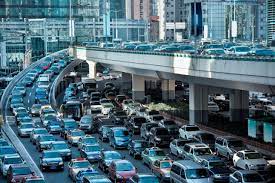
Causes of Traffic Problems
Traffic problems, characterized by congestion, gridlock, and associated tribulations, are an omnipresent challenge in urban and even rural settings. Understanding the underlying causes of these problems is imperative for devising effective strategies to mitigate them and for planning sustainable transportation. Let’s delve into the key factors contributing to traffic problems:
- Rapid Urbanization and Population Growth: As cities sprawl and populations surge, the demand for mobility escalates. More individuals are flocking to urban centers in pursuit of employment and improved living standards, leading to an influx of vehicles on the road. This congestion is a natural consequence.
- Increasing Vehicle Ownership: Rising incomes and affordability have fueled a surge in vehicle ownership. A higher concentration of vehicles on the road exacerbates traffic congestion, especially during peak hours.
- Inadequate Road Infrastructure: Many cities grapple with outdated road infrastructure that fails to keep pace with urban expansion. Narrow roads, poorly designed intersections, and neglectful road maintenance contribute to congestion and traffic problems.
- Lack of Public Transportation: In regions with insufficient or inefficient public transportation systems, more people rely on private vehicles for commuting. This places additional strain on the road network, resulting in congestion.
- Urban Sprawl: The expansion of cities without efficient land-use planning results in commuters traveling longer distances to work, increasing the volume of vehicles on the road and prolonging rush-hour congestion.
- Unplanned Development: Haphazard and unregulated construction, often seen in rapidly growing cities, can lead to chaotic road development, complicating traffic management.
- High Dependency on Personal Vehicles: A cultural preference for personal vehicles over alternative modes of transportation, such as cycling, walking, or carpooling, contributes to traffic congestion.
- Poor Traffic Management: Inadequate traffic management and lax enforcement of traffic regulations can lead to road chaos. This includes issues like erratic lane changes, running red lights, and a lack of adherence to speed limits.
- Goods Transportation: The transportation of goods and freight plays a significant role in traffic congestion, especially in areas with heavy industrial activity. Trucks and delivery vehicles can clog roadways, particularly during peak hours.
- Special Events and Incidents: Large-scale events, accidents, road closures, and construction work can disrupt traffic flow and exacerbate congestion temporarily.
- Rise in Ride-Sharing Services: While ride-sharing services offer convenience, they can also contribute to increased traffic, particularly in cities where these services are widely used.
- Behavioral Factors: Driving habits, including aggressive driving, unnecessary idling, and a lack of consideration for other road users, can intensify traffic problems.
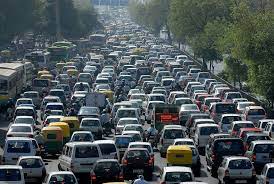
Effects of Traffic Problems
Traffic problems have far-reaching and multifaceted effects that extend beyond the mere inconvenience of being stuck in a traffic jam. These effects touch upon various aspects of our lives, the environment, public health, and the economy. Understanding these consequences is crucial in appreciating the urgency of addressing traffic issues and implementing sustainable transportation solutions. Let’s explore these effects in detail:
Environmental Degradation: Traffic congestion significantly contributes to environmental problems. Prolonged vehicle idling leads to increased emissions of greenhouse gases like carbon dioxide and pollutants such as nitrogen oxides and particulate matter, which deteriorate air quality and contribute to climate change.
Air Pollution: Vehicle emissions resulting from traffic congestion are a major source of air pollution in urban areas. Poor air quality carries severe health implications, including respiratory diseases, heart problems, and even premature mortality.
Noise Pollution: The constant noise generated by traffic can lead to noise pollution, affecting the well-being of residents living near busy roads. Chronic exposure to high noise levels can induce stress, sleep disturbances, and long-term health issues.
Economic Costs: Traffic congestion imposes substantial economic costs, including wasted time and fuel, increased transportation costs for businesses, and reduced productivity. These costs can significantly impact a city’s economy.
Fuel Consumption and Energy Waste: Stop-and-go traffic consumes more fuel and energy than smooth traffic flow, leading to increased fuel consumption and higher energy bills for individuals and governments.
Road Safety Concerns: Congested roads often pose a higher risk of accidents due to reduced maneuverability, longer braking distances, and driver frustration. Traffic congestion can result in injuries and fatalities.
Public Health Implications: The combination of air pollution, noise pollution, and the stress associated with traffic congestion can have adverse effects on public health, leading to an increased prevalence of respiratory illnesses, cardiovascular problems, and mental health issues.
Reduced Quality of Life: Traffic congestion diminishes the overall quality of life for residents in affected areas. Long commutes and time spent in traffic can result in stress, reduced leisure time, and less time spent with family and friends.
Strain on Infrastructure: Prolonged traffic congestion places additional stress on road infrastructure, accelerating wear and tear and necessitating costly repairs and maintenance.
Social and Equity Issues: Traffic problems can exacerbate social inequalities. Those with limited access to private vehicles may face longer and less reliable commutes, limiting their economic opportunities.
Environmental Impact Beyond Roads: Traffic problems extend their effects beyond the roads themselves. Urban sprawl, often exacerbated by traffic congestion, can lead to habitat destruction and the loss of green spaces.
Climate Change Contribution: increased emissions from traffic congestion contribute to climate change, with far-reaching ecological and environmental consequences, such as rising sea levels, extreme weather events, and habitat disruption.
Solutions and Mitigation Strategies
Addressing traffic problems is a multifaceted challenge that necessitates a blend of innovative approaches, effective policies, and collective action. Implementing sustainable transportation solutions not only alleviates traffic congestion but also contributes to a healthier environment, improved public health, and an elevated overall quality of life. Let’s explore some key solutions and mitigation strategies:
Investment in Public Transportation:
- Expanding and enhancing public transportation networks, encompassing buses, trams, and subways, encourages people to opt for these modes, thereby reducing traffic congestion.
- Integration of various public transportation modes and the utilization of technology for real-time updates can enhance convenience and reliability.
Promotion of Active Transportation:
- Fostering walking and cycling as viable transportation alternatives by developing pedestrian-friendly infrastructure, establishing bike lanes, and creating safe pathways.
- Implementing bike-sharing programs and crafting walkable neighborhoods can diminish short car trips.
Carpooling and Ridesharing:
- Encouraging carpooling and ridesharing through incentives such as carpool lanes, reduced tolls, or ridesharing apps.
- Employers can promote ridesharing among employees by offering incentives or facilitating carpool matching.
Congestion Pricing:
- Instituting congestion pricing mechanisms in urban areas during peak hours, which charge vehicles a fee for using particular roads or zones.
- The revenue generated from congestion pricing can be reinvested in public transportation or infrastructure enhancements.
Telecommuting and Flexible Work Arrangements:
- Encouraging employers to provide telecommuting options and flexible work hours to reduce the number of vehicles on the road during peak times.
- Remote work arrangements can help alleviate rush-hour congestion.
Smart Traffic Management:
- Harnessing smart traffic management systems and real-time traffic data to optimize traffic flow, adjust signal timings, and divert traffic away from congested areas.
- Dynamic rerouting apps and adaptive traffic signals can alleviate congestion.
Urban Planning and Land Use:
- Implementing well-planned urban development that diminishes the need for long commutes by creating mixed-use communities and locating workplaces closer to residential areas.
- Encouraging transit-oriented development (TOD) around public transportation hubs.
Promotion of Electric Vehicles (EVs):
- Incentivizing the adoption of electric vehicles through subsidies, tax breaks, and charging infrastructure.
- Electric vehicles produce fewer emissions, mitigating air pollution from traffic.
Education and Awareness:
- Conducting public awareness campaigns to educate people about the environmental, economic, and health benefits of sustainable transportation choices.
- Schools can promote safe and sustainable commuting options among students.
Active Traffic Management (ATM):
- Implementing ATM systems that monitor and manage traffic in real-time, including variable speed limits, lane management, and incident detection.
- ATM helps reduce congestion and improve safety.
Policy and Regulation:
- Enforcing stricter regulations on vehicle emissions and fuel efficiency standards to reduce air pollution from vehicles.
- Implementing policies to reduce the use of single-occupancy vehicles, such as HOV (High Occupancy Vehicle) lanes.
Infrastructure Investment:
- Upgrading and expanding road infrastructure to accommodate increased traffic and enhance road safety.
- Investing in sustainable and resilient infrastructure, including green transportation corridors and bridges.
Collaborative Initiatives:
- Collaborating with stakeholders, including government agencies, local communities, businesses, and non-governmental organizations, to develop comprehensive solutions to traffic problems.
- Engaging citizens in the planning and decision-making processes for transportation projects.
Case Studies
Stockholm, Sweden – Congestion Pricing Success:
- Case Study Description: Stockholm implemented a congestion pricing system in 2006, charging vehicles for entering the city center during peak hours. The revenue generated was reinvested in public transportation and infrastructure improvements.
- Outcomes: Significant reduction in traffic congestion, improved air quality, increased use of public transportation, and revenue to fund sustainable transport projects.
Bogotá, Colombia – TransMilenio BRT System:
- Case Study Description: Bogotá introduced the TransMilenio Bus Rapid Transit (BRT) system, a cost-effective and efficient public transportation system that provides dedicated lanes for buses.
- Outcomes: Reduced traffic congestion, increased ridership, improved air quality, and enhanced accessibility for residents.
Copenhagen, Denmark – Cycling-Friendly Infrastructure:
- Case Study Description: Copenhagen has invested heavily in cycling infrastructure, including bike lanes, parking facilities, and traffic signals designed for cyclists.
- Outcomes: High rates of cycling as a mode of transportation, reduced car traffic, improved public health, and a more sustainable urban environment.
Curitiba, Brazil – Bus Rapid Transit Pioneer:
- Case Study Description: Curitiba pioneered the Bus Rapid Transit (BRT) system in the 1970s, creating dedicated bus lanes and stations with efficient boarding processes.
- Outcomes: Reduced congestion, increased public transit usage, decreased pollution, and a model for other cities to follow.
Singapore – Electronic Road Pricing (ERP):
- Case Study Description: Singapore introduced an Electronic Road Pricing system that charges vehicles for using congested roads during peak hours.
- Outcomes: Reduced traffic congestion, efficient road use, funding for transportation projects, and improved air quality.
Los Angeles, USA – Expanding Metro Rail:
- Case Study Description: Los Angeles has been expanding its metro rail system to provide an alternative to driving in a car-centric city.
- Outcomes: Reduced traffic congestion on certain routes, increased transit ridership, and improved connectivity.
Portland, Oregon, USA – Urban Planning for Sustainable Transportation:
- Case Study Description: Portland has focused on urban planning that encourages mixed-use development, cycling, and public transit use.
- Outcomes: Reduced traffic congestion, high cycling rates, and a reputation as a sustainable and livable city.
Beijing, China – Tackling Air Pollution and Traffic Congestion:
- Case Study Description: Beijing has implemented various measures, including restrictions on car usage, license plate lotteries, and investment in public transportation, to combat traffic congestion and air pollution.
- Outcomes: Mitigated air pollution, reduced traffic congestion, and improved public transportation infrastructure.
Paris, France – Car-Free Days and Pedestrian Zones:
- Case Study Description: Paris has experimented with car-free days and pedestrian zones in certain areas to reduce traffic congestion and improve air quality.
- Outcomes: Increased pedestrian and cyclist safety, reduced pollution, and a more pleasant urban environment.
Delhi, India – Delhi Metro Expans
- Case Study Description: Delhi has invested in expanding its metro rail system to provide a convenient and efficient alternative to road transport in a highly congested city.
- Outcomes: Reduced traffic congestion, improved air quality, and increased public transit ridership.
Challenges and Roadblocks
Resistance to Change:
- Challenge: People often resist changes in their transportation habits, such as shifting from private vehicles to public transport or cycling.
- Roadblock: Overcoming this resistance requires effective communication, education, and incentives to encourage sustainable transportation choices.
Funding and Budget Constraints:
- Challenge: Implementing large-scale transportation projects, such as public transit expansion or infrastructure improvements, requires substantial funding.
- Roadblock: Securing adequate funding can be challenging, and competing budget priorities may delay or hinder transportation initiatives.
Political and Bureaucratic Hurdles:
- Challenge: Transportation projects often involve complex approval processes, political considerations, and interagency coordination.
- Roadblock: Political disagreements, red tape, and bureaucratic inefficiencies can slow down or stall initiatives.
Land Use and Zoning Regulations:
- Challenge: Land use planning and zoning regulations may not align with transit-oriented development (TOD) goals, leading to urban sprawl and increased traffic.
- Roadblock: Amending zoning regulations and gaining community support for denser, mixed-use development can be difficult.
Limited Public Transportation Infrastructure:
- Challenge: Many regions lack adequate public transportation systems, making it challenging for people to switch from private cars to alternative modes.
- Roadblock: Building a comprehensive and efficient public transportation network can be time-consuming and costly.
Equity Concerns:
- Challenge: Transportation policies must address equity issues to ensure that marginalized communities have access to affordable and convenient transportation options.
- Roadblock: Achieving equitable transportation solutions can be complicated, as it often requires addressing historical disparities.
Technical and Engineering Challenges:
- Challenge: Implementing certain transportation solutions, such as building bike lanes or expanding public transit, may face technical and engineering obstacles.
- Roadblock: Overcoming these challenges may require specialized expertise and innovative solutions.
Resistance from Special Interest Groups:
- Challenge: Special interest groups, such as automobile manufacturers or oil companies, may resist policies that promote sustainable transportation.
- Roadblock: Advocacy and lobbying efforts from these groups can slow down or impede progress.
Behavioral Patterns:
- Challenge: Encouraging people to change their commuting habits, such as reducing solo car trips, can be difficult.
- Roadblock: It takes time to shift ingrained behaviors, and some individuals may continue to choose private cars due to convenience or habit.
Infrastructure Upkeep:
- Challenge: Maintaining existing road infrastructure and public transportation systems is crucial but often underfunded.
- Roadblock: Neglected maintenance can lead to deteriorating transportation systems and increased congestion.
Environmental Impact Assessments:
- Challenge: Environmental impact assessments may identify potential ecological impacts of transportation projects, leading to delays or modifications.
- Roadblock: Balancing the need for sustainable transportation with environmental protection can be challenging.
Public Resistance to Congestion Pricing:
- Challenge: Introducing congestion pricing schemes can face opposition from the public, who may view it as an additional financial burden.
- Roadblock: Gaining public acceptance and support for congestion pricing may require extensive public engagement and communication.
Conclusion
In the intricate maze of our modern cities, where the constant rumble of engines and the hustle of commuters have become the backdrop of our lives, the ever-present challenge of traffic problems serves as a testament to the complex web of issues that we confront as stewards of our environment. Through this journey, we have navigated the congested pathways of traffic issues, uncovering their root causes, dissecting their far-reaching consequences, and seeking out solutions that promise a more sustainable, healthier, and harmonious future.
As we reach the culmination of this voyage, it is abundantly clear that traffic problems transcend mere inconveniences; they represent a profound challenge to our communities, our environment, and our well-being. The factors driving traffic congestion, from rapid urbanization to an insatiable appetite for personal vehicles, are deeply embedded in the fabric of our society. However, it is our collective duty to confront these issues with resolve and chart a path toward enduring change.
The consequences of traffic problems, as we have explored, are extensive and interconnected. They affect every aspect of our lives, from the air we breathe to the quality of our urban spaces, from our economic productivity to our personal health. It serves as a stark reminder that our actions, both as individuals and as a society, ripple out with consequences that extend far beyond the confines of our vehicles.
In the face of these challenges, we have uncovered a multitude of solutions and mitigation strategies. From investing in public transportation and cycling-friendly infrastructure to promoting carpooling, ridesharing, and congestion pricing, our toolbox is diverse and adaptable. Through global case studies, we have witnessed the potential for change and the transformative power of innovative approaches, even in the most congested urban landscapes.
Nevertheless, we must acknowledge that the path ahead is not without its hurdles. Resistance to change, budget constraints, and political obstacles may slow our progress. Yet, history has shown that determined communities and visionary leaders can surmount these challenges. The journey toward sustainable transportation may be lengthy and winding, but it is a path worth traversing.
In conclusion, the battle against traffic problems is a battle for the health of our environment, the well-being of our communities, and the prosperity of future generations. It is a battle that necessitates the cooperation of governments, businesses, communities, and individuals. It is a battle that calls for innovation, investment, and, above all, a commitment to change.
Certificate of Completion
[Student’s Name][Class/Grade Level]This is to certify that I, [Student’s Name], a [Class/Grade Level] student, have successfully completed the project on “Traffic Problem For Class 11th And 12th.” The project explores the fundamental principles and key aspects of the chosen topic, providing a comprehensive understanding of its significance and implications.
In this project, I delved into in-depth research and analysis, investigating various facets and relevant theories related to the chosen topic. I demonstrated dedication, diligence, and a high level of sincerity throughout the project’s completion.
Key Achievements:
Thoroughly researched and analyzed EVS Project On Traffic Problem For Class 11th And 12th.
Examined the historical background and evolution of the subject matter.
Explored the contributions of notable figures in the field.
Investigated the key theories and principles associated with the topic.
Discussed practical applications and real-world implications.
Considered critical viewpoints and alternative theories, fostering a well-rounded understanding.
This project has significantly enhanced my knowledge and critical thinking skills in the chosen field of study. It reflects my commitment to academic excellence and the pursuit of knowledge.
Date: [Date of Completion]Signature: [Your Signature] [School/Institution Name][Teacher’s/Examiner’s Name and Signature]
In order to download the PDF, You must follow on Youtube. Once done, Click on Submit
Follow On YoutubeSubscribed? Click on Confirm
Download EVS Project On Traffic Problem For Class 11th And 12th PDF


